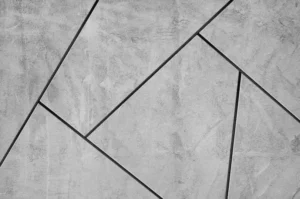 Tile flooring is one of the most popular choices for kitchens, bathrooms, and high-traffic areas — and for good reason. It’s durable, stylish, and water-resistant. But is it always the right choice?
Tile flooring is one of the most popular choices for kitchens, bathrooms, and high-traffic areas — and for good reason. It’s durable, stylish, and water-resistant. But is it always the right choice?
Here’s a practical breakdown of the real-world pros and cons of tile floors, so you can make a smart decision before installing.
The Pros of Tile Flooring
1. Super Durable
Tile can handle a lot — spills, foot traffic, pet claws, even heavy furniture. Porcelain and ceramic tiles are especially tough and can last decades if installed well.
Why it matters: Great for busy homes, large families, and commercial spaces.
2. Water-Resistant (and Sometimes Waterproof)
Unlike wood or laminate, tile doesn’t swell or warp when it gets wet. That’s why it’s the go-to for bathrooms, laundry rooms, and kitchens.
Bonus: Porcelain tile is almost completely waterproof.
3. Easy to Clean
No special cleaners needed. Spills wipe right up. Dirt doesn’t cling to tile the way it does to carpet or textured floors.
Tip: Grout can stain, so sealing it helps maintain a clean look.
4. Endless Style Options
Tile comes in every look — natural stone, wood-look, concrete, patterned, bold colors, neutrals. It fits modern, classic, boho, or anything in between.
Design idea: Use large-format tiles for a sleek, spacious feel. Or mix and match patterns for something more custom.
5. Good for Allergy Sufferers
Tile doesn’t trap dust, pollen, or pet dander like carpets do. It’s a healthier choice if you’re sensitive to allergens.
6. Works With Heated Floors
If you want radiant heat, tile is ideal. It holds and distributes warmth better than wood or vinyl.
The Cons of Tile Flooring
1. Feels Cold Underfoot
Without radiant heating, tile can feel chilly — especially in winter.
Fix: Use rugs in cozy zones like bedrooms or invest in underfloor heating.
2. Hard and Unforgiving
Dropped something? It’ll probably break. Standing too long on tile can be uncomfortable.
Tip: Anti-fatigue mats work great in places like the kitchen sink.
3. Slippery When Wet
Glossy tiles can be slick. This is especially important in bathrooms or with kids and older adults at home.
Fix: Choose matte or textured finishes for slip resistance.
4. Installation Can Be Pricey
Tile requires skill and time to install. Mistakes are expensive to fix. The surface underneath needs to be properly prepped — no shortcuts here.
Note: DIY is possible, but most people hire pros for best results.
5. Grout Maintenance
Grout lines can get dirty or discolored over time. Sealing helps, but some upkeep is inevitable.
Pro tip: Darker grout hides stains better than white.
Final Thought
Tile flooring is a smart, stylish, and long-lasting choice — especially for wet or high-use areas. But it’s not one-size-fits-all.
Think about where it’s going, who’s using the space, and what kind of look and feel you want. When done right, tile can add value, beauty, and practicality to your home for years to come.
Just go in with eyes wide open — and good grout sealer on hand.
Picture Credit: Freepik

